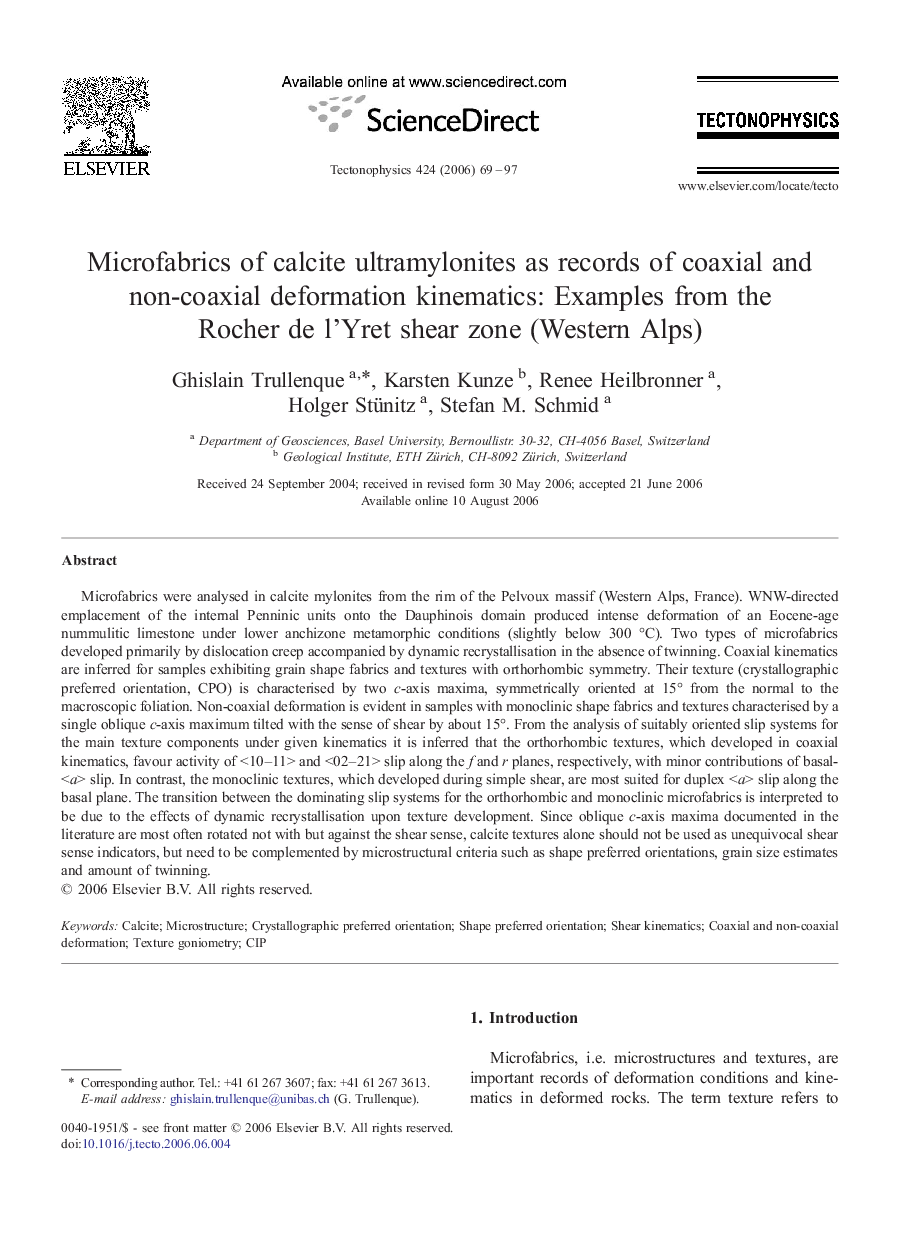| کد مقاله | کد نشریه | سال انتشار | مقاله انگلیسی | نسخه تمام متن |
|---|---|---|---|---|
| 4695049 | 1636948 | 2006 | 29 صفحه PDF | دانلود رایگان |

Microfabrics were analysed in calcite mylonites from the rim of the Pelvoux massif (Western Alps, France). WNW-directed emplacement of the internal Penninic units onto the Dauphinois domain produced intense deformation of an Eocene-age nummulitic limestone under lower anchizone metamorphic conditions (slightly below 300 °C). Two types of microfabrics developed primarily by dislocation creep accompanied by dynamic recrystallisation in the absence of twinning. Coaxial kinematics are inferred for samples exhibiting grain shape fabrics and textures with orthorhombic symmetry. Their texture (crystallographic preferred orientation, CPO) is characterised by two c-axis maxima, symmetrically oriented at 15° from the normal to the macroscopic foliation. Non-coaxial deformation is evident in samples with monoclinic shape fabrics and textures characterised by a single oblique c-axis maximum tilted with the sense of shear by about 15°. From the analysis of suitably oriented slip systems for the main texture components under given kinematics it is inferred that the orthorhombic textures, which developed in coaxial kinematics, favour activity of <10–11> and <02–21> slip along the f and r planes, respectively, with minor contributions of basal- slip. In contrast, the monoclinic textures, which developed during simple shear, are most suited for duplex slip along the basal plane. The transition between the dominating slip systems for the orthorhombic and monoclinic microfabrics is interpreted to be due to the effects of dynamic recrystallisation upon texture development. Since oblique c-axis maxima documented in the literature are most often rotated not with but against the shear sense, calcite textures alone should not be used as unequivocal shear sense indicators, but need to be complemented by microstructural criteria such as shape preferred orientations, grain size estimates and amount of twinning.
Journal: Tectonophysics - Volume 424, Issues 1–2, 19 September 2006, Pages 69–97